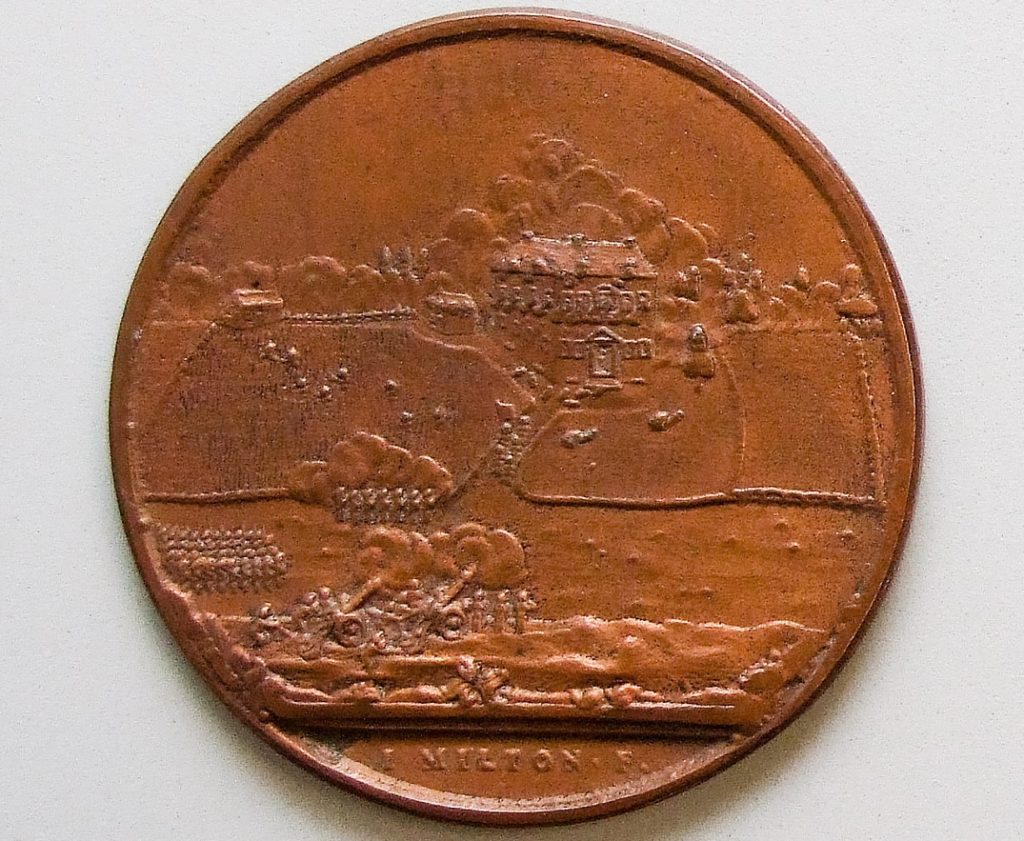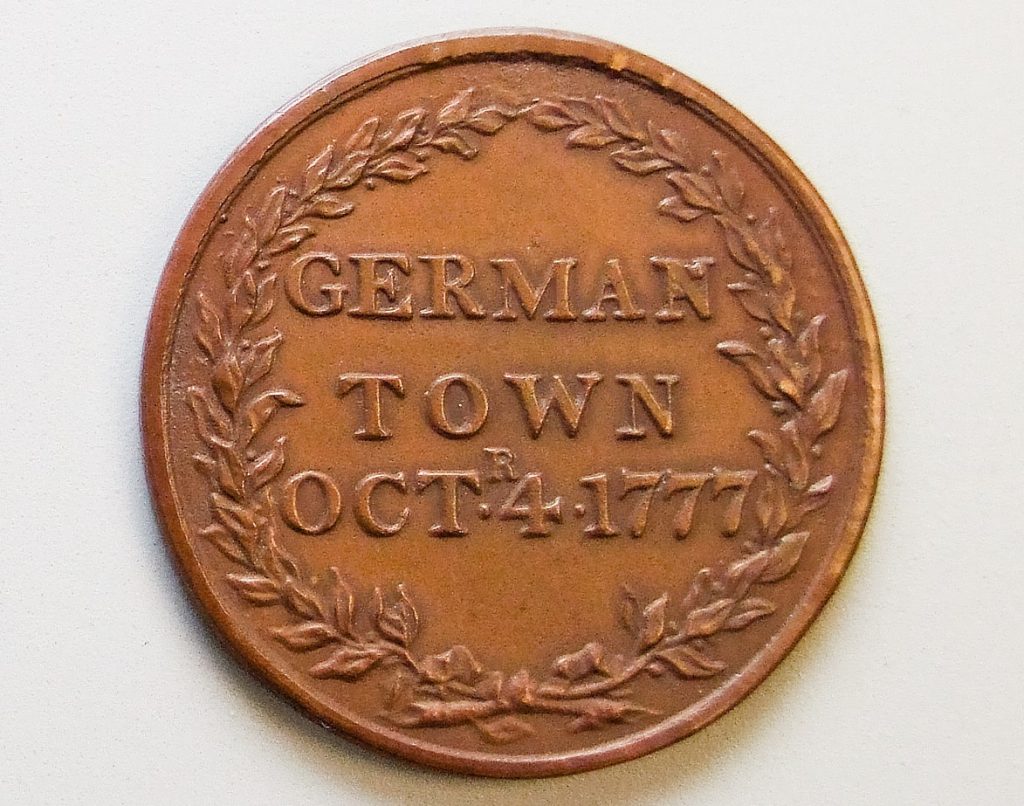

During the late eighteenth century, awards and decorations to units and individuals for distinguished valor in particular engagements was uncommon in the British army. The medal depicted honors the role of the Fortieth Regiment of Foot at the Battle of Germantown. That such an award was created speaks to the bravery and determination of the men of the Fortieth on the morning of October 4, 1777.
On October 4, 1777, Washington’s army attacked British positions outside the small village of Germantown, Pennsylvania. British light infantry attempted to hold the advancing American columns back but were running low on ammunition. At this critical moment, Lieutenant Colonel Thomas Musgrave of the Fortieth Regiment of Foot sent half his regiment in support of the light infantry. With patriot forces all around, Musgrave ordered about a hundred men of the Fortieth into Cliveden, an elegant gray stone house built in 1767 as the home of Chief Justice Benjamin Chew. A British volley stalled the advancing rebels as men barricaded themselves inside, finding cover under windows and behind doors. Within a matter of minutes, the Chew home had become a fort. Musgrave positioned soldiers at windows and doors.
With hundreds of Continental soldiers storming past the fort, Colonel Musgrave steadied the nerves of men, telling them “that their situation was nevertheless by no means a bad one, as there had been instances of only a few men defending a house before against numbers; that he had no doubt of their being supported and delivered [rescued] by our army; but that at all events they must sell themselves as dear as possible to the enemy.”
Washington debated what to do about the British force inside the Chew House. Captain Henry Lee of the First Continental Light Dragoons served as part of Washington’s mounted guard that day and recalled in his memoirs, “the halt at Chew’s house was taken after some deliberation . . .Many junior officers, at the head of whom were Colonel Pickering and Lieutenant Colonel Hamilton, urged with zeal the propriety of passing the house. Brigadier Knox opposed the measure with earnestness, denouncing the idea of leaving an armed force in the rear; and, being always high in the general’s confidence, his opinion prevailed.”
American artillery failed to pierce the exterior, but for the men inside, fragments of wood, glass and stone became deadly projectiles. After the artillery barrage, New Jersey Continentals rushed the entrances. British musket fire was devastating as Musgrave ordered his men to hold their fire until the advancing Americans were within near point blank range.
Following this unsuccessful attempt, it was decided to try to burn the house. Volunteers for this dangerous task came from among the most promising young officers of Washington’s command, including Colonel John Laurens, French aide Thomas Antoine du Plessis-Mauduit, and Major John White and Major Edward Sherburne, both on the staff of General John Sullivan. The latter two were mortally wounded in the attempt.
Musgrave’s determined defense contributed to the American tactical loss. Continuing attempts to dislodge the Fortieth cost the Continentals time and men. As the American attack dissipated, British reinforcements relieved Musgrove and his surviving men from the Chew House.
Produced by John Milton ca. 1786, a May 25, 1789, inspection report of the Fortieth Regiment notes, “The officers of this regiment wear also a silver medal round their necks presented to them by the present colonel in memory of the very gallant and noble stand the regiment made at Germantown.” The medal was commissioned by General Sir George Osborn, who served as the Fortieth’s colonel from 1786 to 1818. Originally given to participants of the battle, the award was afterwards given out more generally to members of the Fortieth Foot. Bronze medals were produced for enlisted men and silver medals were struck for officers.